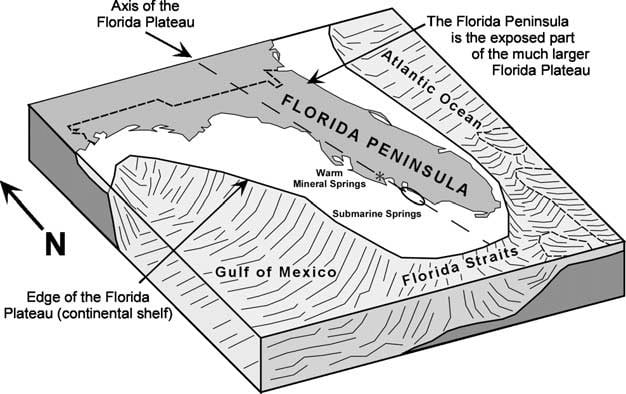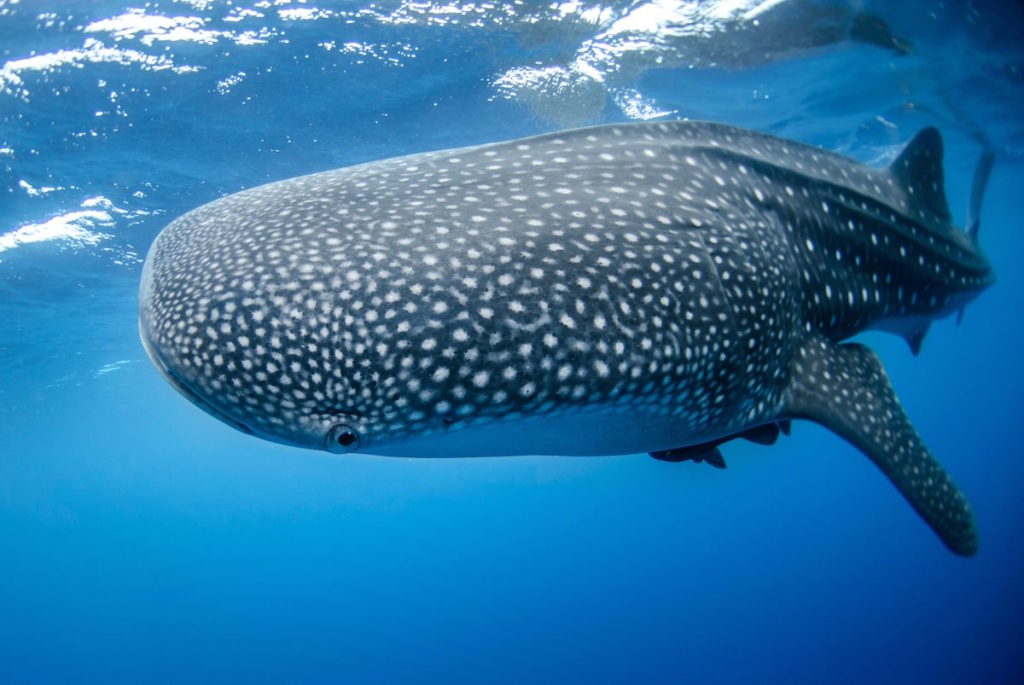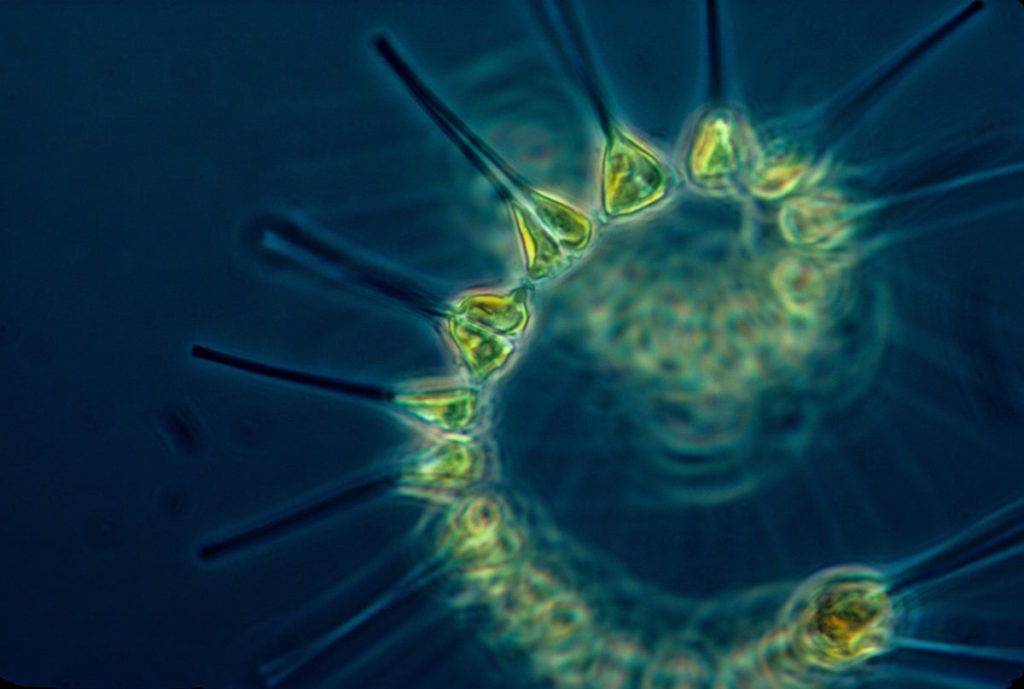Blue Holes in Florida
Note: This article is about underwater blue holes in Florida’s oceans. Here is the link to Blue Hole Spring in Ichetucknee Springs State Park, if you were looking for that instead.
I first learned about blue holes in Florida while doing research for freediving and scuba diving. Over time I’ve become obsessed.
I’ve spent months exploring around Mexican cenotes. I dream about free-falling into Dean’s Blue Hole in the Bahamas, and have fallen in love with hidden springs in Florida.
If you find this stuff interesting, consider checking out other springs in Florida. They’re amazing, and feel every bit as adventurous as a blue hole in the middle of the ocean.
Recommended Reading
This spring guide is a great, easy starting place. I also 100% recommend the book Deep, by James Nestor.
I can’t even tell you how good this is. I’ve told so many people about this and everyone loves it. The audio version is also excellent.
What is a Blue Hole?
Blue Holes are basically normal springs or sinkholes, they’re just found in the ocean. Florida’s blue holes started out as land-based springs and sinkholes.
About 10,000 years ago sea levels were much lower than they are today because Earth was in an ice age.
Eventually, the ice age ended. Glaciers and polar ice melted, and sea levels rose. Oceans flooded over part of the Florida Plateau, which had been dry land. Lots of springs and sinkholes became blue holes and submarine springs.
This documentary is absolutely fantastic for understanding Florida’s blue holes. I highly recommend it!
How Many Blue Holes Are There?
Scientists don’t know exactly how many blue holes there are.
Several dozen have been mapped off of Florida’s Gulf Coast. But, there are many more spread across the sea floor.
There are probably hundreds, or even thousands which have not yet been discovered.
Why are there so many blue holes in Florida?
Florida has thousands of springs, sinkholes and blue holes because of its bedrock type, called karst limestone. The limestone is filled with holes, like swiss cheese. This creates ideal conditions for sinkholes and blue holes to form.

Florida is basically a giant platform of karst limestone.
On the east side, the platform quickly drops into the deep Atlantic Ocean.
But, on the Gulf of Mexico side, the platform stretches far out to sea for about 100 miles.
Blue holes are sprinkled throughout the rest of the platform, waiting to be discovered. Divers and researchers sometimes even find them accidentally while studying other holes.
In Earth’s ancient past, sea levels were much lower. Back then, the entire Florida peninsula was exposed, dry land. In our modern climate, only half of the Florida platform is above water. The rest sits under the Gulf of Mexico.
Florida isn’t the only place with blue holes. They’re commonly found around the world. They can be found in many oceanic areas with karst geology.
In Mexico’s Yucatan Peninsula there are thousands of known cenotes and blue holes. Geologists know there are many more that haven’t been discovered yet.
This viral video introduced many people to blue holes for the first time.
The film shows a freediver at Dean’s Blue Hole in the Bahamas. He dives off the ledge of a blue hole as if he is skydiving. He is weighted and has negative buoyancy, which is why he can fall like this.
Green Banana
The Green Banana blue hole is located 50 miles offshore of Sarasota. It was named by fishermen who found the hole in the 1970s. The boat captain supposedly saw green bananas floating in the water while fishing, so that became the name.
It’s one of the most well-known blue holes in Florida, thanks to recent scientific exploration.
Green Banana is one of the deepest blue holes ever discovered or explored. The opening of the blue hole is 155 feet under water. The bottom is a total of 425 feet under the water’s surface. Amazingly, humans have dove to the bottom several times.
Mud Hole Spring
Mud Hole Spring is another blue hole, or submarine spring. It’s unusual because it has an active hot spring vent. It’s located about 11 miles offshore from Fort Myers, Florida.
Mud Hole Spring got its name because the spring discharges a discolored, muddy plume of warm water.
Mud Hole doesn’t get as much media attention as Green Banana — maybe because its name isn’t as cute. But, Mud Hole Spring is fascinating.
Mud Hole is very similar to the other two hot springs in Florida, Warm Mineral Spring and Little Salt Spring. All three are found in the same region, and share similar characteristics.
Mud Hole Spring’s water flow comes from deep within the earth. The source is so deep that it’s heated by the earth’s heat and pressure. There is no volcanic activity in this area, so the warming is much less intense than if it were heated by a magma chamber, or volcanic activity.
It may hold the key to some of Florida’s most important environmental questions. It may give us clues about red tide, Florida’s aquifer, Earth’s geothermal heating, the safety of Florida’s drinking water, and more.
Scientists have been interested in Mud Hole Spring for decades. But, research has been slow because of difficult research conditions and a general lack of funding.
Mud Hole Spring is a gathering place for many forms of marine life, including sea turtles and whale sharks.
It may also contain rare forms of life that use chemicals to form energy instead of from the sun. We cover this in a later section, but it’s a fascinating subject for marine biologists.

Amberjack Hole
Amberjack Hole is one of the more well-known and well-studied blue holes in the Gulf of Mexico.
It’s very popular among fishermen in the Gulf. It got it name because it is home to giant schools of large Amberjack fish, among others.
The Amberjack blue hole is approximately 30 miles off the coast of Sarasota. It sits about 114 feet underwater. At its deepest point, the Amberjack hole it is 350 ft. deep beneath the water surface.
Source: NOAA
Finding Blue Holes
To find blue holes, researchers use a variety of techniques. They:
- Consult fishermen
- Track and observe sea turtle migration
- Use tools like high-resolution sonar and satellites
- Use aerial observation to look for water anomalies
Good fishermen are observant and well-tuned to water changes. Blue holes attract fish and marine life, so it makes sense that fishermen would notice.
This is true for shipwrecks, too. Nautical archeologists know that fishermen are a great source of information to find shipwrecks and underwater formations.
Scientists mostly rely on indirect clues. They look for signals from marine life, discolored water, changes in water temperature, saltiness and other telltale signs.
Modern science first began to notice submarine springs and blue holes in the late twentieth century. But, it’s possible that humans may have known about Florida’s offshore blue holes for much longer.
Hernando de Soto explored Florida in the 1500s. He famously searched for magical springs in Florida, and the Fountain of Youth near Warm Mineral Spring.
While sailing in the Gulf of Mexico, he allegedly noticed an upwelling of freshwater in the middle of the Gulf of Mexico. He speculated that the spots were underwater springs. Source
Blue holes are hard to find for several reasons:
- They’re hidden under sea water
- Marine search expeditions are expensive
- Underwater research is dangerous
- Research budgets are limited
Some blue holes are giant, and others are small. Some are too tiny for a human to squeeze through at the top, but then open up into giant undersea caverns.
Exploring Blue Holes
Blue holes are fascinating because they’re like thriving oases in an empty desert.
The empty sea floor can extend for miles without anything interesting. And then, all the sudden, something exciting happens: a giant hole appears.
The hole plunges hundreds of feet down into the ocean floor. And, it’s teeming with life; fish, spongses, colorful sea life of every kind.
One marine researcher, Jim Cutler, beautifully described them as coral reefs, but in reverse.
“We call blue holes ‘ecological hotspots’ because they’re really biologically diverse and chemically distinct compared with the areas around them” -Dr. Emily Hall, Mote Marine Laboratory
A blue hole attracts sea life because it’s a source of food.

Here’s how it works:
- There are lots of nutrients.
- The nutrients feed plants and phytoplankton.
- The plants and phytoplankton attract fish.
- The fish attract bigger fish and predators.
- Lots of marine life is attracted.
- Marine life dies and fall to the ocean floor.
- The bodies release nutrients back into the water.
- The system repeats.
This system seems pretty straightforward. But, it raises a question.
Why are blue holes rich with nutrients to begin with? Scientists aren’t sure. It’s one of many mysteries. There are several possible reasons.
It’s possible that some blue holes discharge nutrient-rich water. The nutrients-rich could occur naturally. Or, those nutrients could be discharged by the Florida aquifer system. If so, those nutrients could be linked to human pollution.
Some blue holes may be rich with nutrients simply because they’re holes filled with sea life. That would make a sort of chicken and egg question. It would probably work like this:
- Fish and sea life find the hole. It feels cozy. They use the hole for protection.
- They eventually die. Their bodies fall into the hole.
- The bodies decompose at the bottom of the hole.
- Decomposing bodies release nutrients.
- Nutrient-rich water rises out of the hole.
- The nutrients feed phytoplankton near the water surface.
- The cycle repeats.
These questions about blue holes may seem obscure, or unimportant. Don’t we have bigger things to worry about?
Well, actually, they’re super important. They give us a basic understanding of how our Earth and oceans work.
Our oceans are changing, fast. We can already see dangerous warning signs, but we’re nowhere close to understanding the situation. We’re changing our oceans in many ways:
- Oceans are warming and becoming more acidic
- Industrial fishing and development is destroying fish populations
- Important ecosystems like sea grass and coral reefs are disappearing
- Industrial agriculture is pumping our oceans full of fertilizer
These things will seriously alter our oceans, and our food supplies. We must know how these changes will impact our oceans.
The blue holes are windows into our oceans, our past, and our future. They can tell us valuable information, like past hurricane activity, and even our own ancient biological ancestry.
“Blue holes are ‘natural laboratories’ that can help us understand changes in our environment, especially in light of decreasing pH, or ocean acidification, which is a component of climate change”
Oceans cover more than 75% of our planet. They’re unimaginably complex systems, and we depend on them.
Healthy, functioning oceanic systems support all life on earth. If our oceans don’t function properly, human life cannot exist.
Despite this, we know almost nothing about them. It is not an exaggeration to say that, in many ways, we know more about outer space than we know about our own oceans.
Challenging Conditions
Florida’s blue holes are challenging to study for several reasons:
- The research sites are far out at sea, very far from land
- Scientists must work around calm weather windows
- Work stops when seas are rough and when storms approach
- Every expedition requires an immense amount of preparation work
- Underwater research is incredibly expensive
- 300+ feet-deep dives require specialized equipment, training and techniques.
- When divers reach a certain depth, air cannot be used anymore. Special gases are required.
It’s also harder because they aren’t working in a sterile, isolated laboratory. Exploration is done in the middle of the ocean, from boats which are constantly moving. There are infinite variables, and dangerous conditions.
Diving in very deep water presents its own challenges. It’s difficult, complex and dangerous.
As you go deeper it becomes even more difficult. Flawless, technical precision is required. It’s more like an astronaut space walk than a recreational scuba dive.
To work hundreds of feet underwater is very similar to an astronaut doing a space walk. One silly mistake or accident could cause death.
Scientific and Environmental Importance
Florida’s blue holes are being studied by hydrogeologists, who hope they might help solve important questions.
The most pressing questions are related to groundwater exchange, and how Florida’s aquifer interacts with seawater.
One of the most important and fascinating questions for scientists if blue holes share common pipes and plumbing with the rest of Florida’s Aquifer.
This could give scientists clues about saltwater intrusion into the Florida Aquifer. Salt water intrusion is one of the top threats to Florida’s water supply.
“Some blue holes seem connected to other cavities in Florida’s porous, limestone bedrock, and the groundwater they contain. Such connections, if confirmed in multiple blue holes, should be investigated as possible ‘shortcuts’ for saltwater intrusion into the Florida Aquifer and its drinking water, or conversely, for fresh water carrying land-based chemicals– including nutrients– offshore.”
Researchers have already found that salt water can migrate many miles inland to infiltrate Florida’s aquifer.
Could water find its way from land, through a maze of underground passages, and out into the Gulf of Mexico?
If the answer is yes, it could hold a key to understanding Florida’s water supply, red tide, and other important questions.
Nutrient Pollution and Red Tide
Nutrient pollution is one of the greatest threats to Florida’s natural environment.
It’s possible that land-based nutrient pollution is entering the Gulf of Mexico. If this is true, it could hold clues about the origins and causes of Florida’s catastrophic red tide problem.
This could be one more example of how we are setting ourselves up for failure to avoid red tide.
Imagine this scenario:
- The Piney Point phosphate site pumps nutrient-rich water deep into the ground.
- The water enters the aquifer and begins flowing around a maze of passages.
- Eventually, some of that water exits through a private well, and then someone’s kitchen faucet.
- Other water exits through Mud Hole Spring in the Gulf of Mexico.
- The nutrients feed red tide, which turns into a runaway bloom.
Geothermal Heating
Some of the holes, especially Mud Hole Spring, have unusual geothermal characteristics.
The holes descend so far down into the Earth’s crust that they are warmed by the Earth’s heat and pressure.
Water is trapped inside a swiss-cheese maze of countless holes, tunnels and passages. Some water moves through the maze quickly, and some stays still. Some water may pass through the system and reach the surface again within days; another chamber of water may sit still for a hundred thousand years.
When water descends deep enough it can be warmed by the Earth’s heat and pressure, also known as geothermally heated water.
This happens at Warm Mineral Spring and Little Salt Spring, the only two land-based hot springs in Florida. It’s possible that Mud Hole Springs is connected to both.
Exploration
Several universities, research organizations and scientists are participating in this research as well:
- The USGS
- Georgia Tech University
- Florida Atlantic University
- Mote Marine Laboratory
Amazing technology is being used to explore the depths. They’re called remotely operated vehicles, or ROVs for short.
This is the same technology that was used to find the wreck of the Titanic, and other famous ocean discoveries.
ROVs can perform research that would be impossible using only human divers.
Scientists are using one specialized tool called a Benthic Lander. It’s sort of like the Lunar Lander used to explore the surface of the Moon.
The Benthic Lander explores the bottom of the sea floor and performs scientific analysis. This technology is amazing.
It’s built to survive extremely hostile conditions, and is like something that would be used in space exploration.
The benthic Lander is a useful tool because it can remain underwater for long periods of time.
A human diver might spend several hours under water, but only a tiny amount of time is spent on the bottom.
The rest of the time is spent descending, or ascending and going through a long waiting period called decompression.
Diver’s bodies also become exhausted from long exposure to the cool water temperatures.
In contrast, the Lander can operate continuously. It can remain on the sea floor for up to 24 hours at a time, instead of one hour for a human diver.
One mission with the Benthic Lander might provide as much data as hundreds of human divers.
Marine Life and Rare Lifeforms
Many of the organisms that live inside deep blue holes are extremely specialized and unique. They can survive with in conditions that would kill other life forms. They can thrive without oxygen and in extremely acidic conditions..
The ocean is a fascinating place. In some areas there can be vast, empty deserts. There’s nothing there.. Then, an oasis appears out of nowhere, filled with fish and all types of sea life. One marine researcher, Jim Cutler, described blue holes as reverse coral reefs.
Some fish inside blue holes can grow unimaginably large.
Spearfishermen have speared 70 pound fish inside the blue holes, only to have them snatched away by giant Goliath Grouper.
Goliath Grouper, also known as Jewfish, can grow up to 8 feet long and 700 pounds. They commonly live inside blue holes.
Alien Life
Some organisms inside Blue Holes may not live anywhere else.
Inside some of the blue holes, water conditions are hostile to normal living organisms.
- There isn’t a trace of sunlight.
- There is no oxygen.
- The water is extremely acidic.
- High levels of natural chemicals that would kill most organisms.
All of these things make life very difficult. For the organisms that live here, they must evolve, or disappear.
Most life on Earth gets its energy from the sun, directly through photosynthesis, or indirectly by eating producers which make energy from the sun.
But, there is another class of organisms. These organisms don’t get their energy from the sun at all, either directly or indirectly.
Instead, they create their own energy from chemicals. This process is called chemosynthesis. It’s the same process that happens at geothermal vents, and it may be a source of Earth’s earliest life.
Like black smoker vents, they could help us understand where Earth’s earliest life forms originated. And, by extension, how to understand lifeforms on other planets.
We understand very little about these communities, or lifeforms. They were not even discovered until 1977:
“Scientists first discovered hydrothermal vents in 1977 while exploring an oceanic spreading ridge near the Galapagos Islands. To their amazement, the scientists also found that the hydrothermal vents were surrounded by large numbers of organisms that had never been seen before. These biological communities depend upon chemical processes that result from the interaction of seawater and hot magma associated with underwater volcanoes.”
–NOAA
